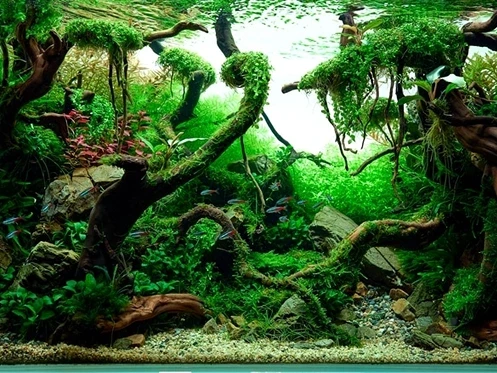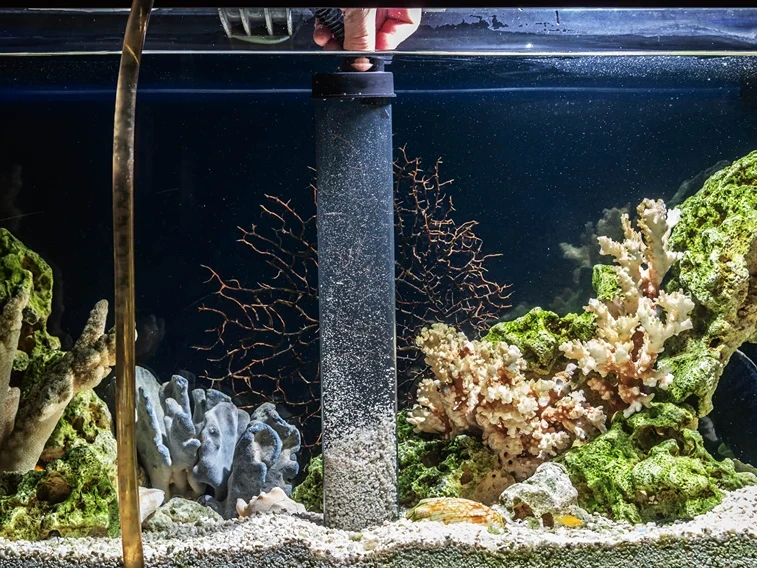Aquariums are a beautiful addition to any home, offering a glimpse into the fascinating world of aquatic life. However, setting up and maintaining an aquarium comes with its own set of challenges, especially when it comes to safety. Whether you’re a seasoned aquarist or a beginner, understanding the importance of aquarium safety is crucial for the well-being of both your aquatic friends and your family. In this article, we’ll dive deep into the essential safety tips for setting up and maintaining your aquarium, focusing on the United Kingdom’s context.
Key Takeaways
- Choosing the Right Location: Ensure your aquarium is placed on a stable surface away from direct sunlight and electrical appliances.
- Electrical Safety Tips: Use a drip loop and ensure all electrical installations are done according to UK safety standards.
- Water Quality and Chemical Safety: Regularly test your water and handle aquarium chemicals with care.
- Equipment Safety Tips: Regular maintenance and proper use of heaters, filters, and lights are essential for a safe aquarium.
Aquariums not only bring the beauty of underwater life into our homes but also require a commitment to safety and maintenance to ensure the health and well-being of the aquatic life they house. From the initial setup to ongoing care, there are several key considerations every aquarium owner in the United Kingdom should be aware of.
Register for our latest in-depth reviews and product round-ups from the experts
Enter your email address below to receive our twice monthly reviews emails.
By entering your details, you are agreeing to our terms and conditions and privacy policy. You can unsubscribe at any time.

Choosing the Right Location: Avoiding Hazards
The first step in aquarium safety is selecting the appropriate location for your tank. It’s not just about aesthetics; it’s about creating a safe environment for both the tank and its surroundings.
- Stability is Key: Ensure the surface can support the weight of the tank when fully filled with water, decorations, and aquatic life. An average aquarium can weigh as much as 10 pounds per gallon, so a 50-gallon tank could weigh over 500 pounds.
- Avoid Direct Sunlight: To prevent algae growth and temperature fluctuations, place your aquarium away from windows or areas receiving direct sunlight.
- Keep Away from Electrical Appliances: To reduce the risk of electrical interference and potential hazards, maintain a safe distance between your aquarium and electronic devices.
Safe Aquarium Setup: Electrical Safety Tips
Electrical safety is paramount when setting up your aquarium. Water and electricity are a dangerous combination, and taking the right precautions can prevent accidents.
- Use a Drip Loop: A drip loop allows any water that runs down the cord to drip off before reaching the electrical outlet, reducing the risk of electrical shock.
- RCD Protection: Ensure that all aquarium electrical devices are connected through a Residual Current Device (RCD) to protect against electrical faults.
- Regular Inspections: Check cords and plugs regularly for signs of wear or damage, and replace any faulty equipment immediately.
Water Quality and Chemical Safety
Maintaining high water quality is essential for the health of your aquatic life. However, managing water quality and handling aquarium chemicals safely is also crucial for human safety.
- Regular Water Testing: Test your water regularly for pH, ammonia, nitrites, and nitrates to ensure it remains within safe parameters for your aquatic life.
- Safe Chemical Handling: Always follow the manufacturer’s instructions when using aquarium chemicals. Store them out of reach of children and pets, and use gloves and eye protection when handling.
Table 1: Essential Water Parameters for a Freshwater Aquarium
| Parameter | Ideal Range |
| pH | 6.5 – 7.5 |
| Ammonia | 0 ppm |
| Nitrite | 0 ppm |
| Nitrate | < 20 ppm |

Maintaining Your Aquarium Safely
Regular maintenance is key to a safe and healthy aquarium. This includes not only cleaning the tank and changing the water but also inspecting the equipment and ensuring everything is functioning correctly.
- Routine Checks: Perform weekly checks on your aquarium’s filter, heater, and other equipment to ensure they are working properly.
- Cleaning: Regularly clean the tank, decorations, and substrate to prevent the buildup of harmful substances.
- Water Changes: Regular water changes, typically 10-20% of the tank volume every two weeks, help maintain water quality and reduce the risk of disease.
Equipment Safety Tips
Aquarium equipment, if not used or maintained properly, can pose risks to both the aquarium inhabitants and the aquarist. Here are some tips to ensure your equipment is safe:
- Heater Safety: Always turn off the heater when performing water changes to avoid cracking due to temperature differences. Ensure the heater is fully submerged to prevent malfunction.
- Filter Maintenance: Clean or replace filter media as recommended by the manufacturer to prevent blockages and ensure efficient operation.
- Lighting: Use aquarium-specific lighting and ensure it is properly installed to avoid overheating and potential fire hazards.
Aquarium safety is an ongoing commitment that requires attention to detail and an understanding of the specific needs of your aquatic environment. By following these guidelines, you can create a safe and thriving aquarium that brings joy and beauty into your home while ensuring the safety of both your aquatic friends and your family. Stay tuned for more in-depth discussions on advanced safety tips and a comprehensive FAQ section to address all your aquarium safety concerns.

Advanced Safety Tips
As you become more comfortable with basic aquarium maintenance and safety, you might consider incorporating more advanced equipment or techniques into your setup. While these can enhance the beauty and functionality of your aquarium, they also come with their own set of safety considerations.
- Automated Systems: Automated systems for feeding, water changes, or lighting can simplify aquarium maintenance but ensure they are correctly installed and regularly checked for malfunctions.
- CO2 Systems for Planted Tanks: CO2 systems can greatly benefit plant growth but require careful monitoring to avoid adversely affecting your tank’s pH and the health of its inhabitants.
- UV Sterilizers: While effective in controlling algae and harmful bacteria, UV sterilizers must be used according to the manufacturer’s guidelines to avoid harm to your aquatic life.
Table 2: Comparison of Advanced Aquarium Equipment
| Equipment Type | Benefits | Safety Considerations |
| Automated Systems | Simplifies maintenance, Consistent care | Regular checks for malfunctions, Correct installation |
| CO2 Systems | Enhances plant growth, Controls algae | Monitor pH levels, Avoid overuse |
| UV Sterilizers | Controls algae and bacteria, Improves water quality | Use according to guidelines, Regular bulb replacement |
Innovations in Aquarium Safety
The aquarium industry is continually evolving, with new innovations designed to enhance both the beauty of your setup and the safety of your aquatic environment.
- Smart Aquariums: These come equipped with built-in monitoring systems that alert you to changes in water quality, temperature, and equipment function, allowing for quick interventions.
- Low-voltage LED Lighting: Not only are these lights energy-efficient, but they also operate at a low voltage, reducing the risk of electrical accidents.
- Magnetic Cleaners: These allow you to clean the inside of the glass without needing to put your hands in the water, minimizing the risk of disturbing your setup or injuring yourself on decorations.
Aquarium safety, while requiring diligence and attention to detail, is not an insurmountable challenge. By adhering to the guidelines outlined in this article and staying informed about the latest advancements in aquarium technology, you can enjoy the beauty and tranquility of your aquatic environment with peace of mind.
FAQs on Aquarium Safety
The most common accidents include electrical shocks from improperly handled equipment, water damage due to leaks or spills, and cuts from broken glass or sharp objects within the tank.
To child-proof your aquarium, ensure it’s placed on a sturdy, high surface out of reach of young children. Use secure lids to prevent children from accessing the water, and keep all electrical cords and chemicals safely stored away.
In the event of an electrical failure, unplug all equipment immediately. Use a battery-operated air pump to maintain oxygen levels in the tank until power is restored. Check all equipment for damage before turning them back on.
Martin Cochran
Dive into fish care with Martin, your guide from the coastal beauty of Brighton. He shares tips on keeping your aquatic companions happy and healthy. Join him on a fin-tastic journey where every swim is a voyage of joy. Trust Martin for a smooth sailing aquatic experience.




